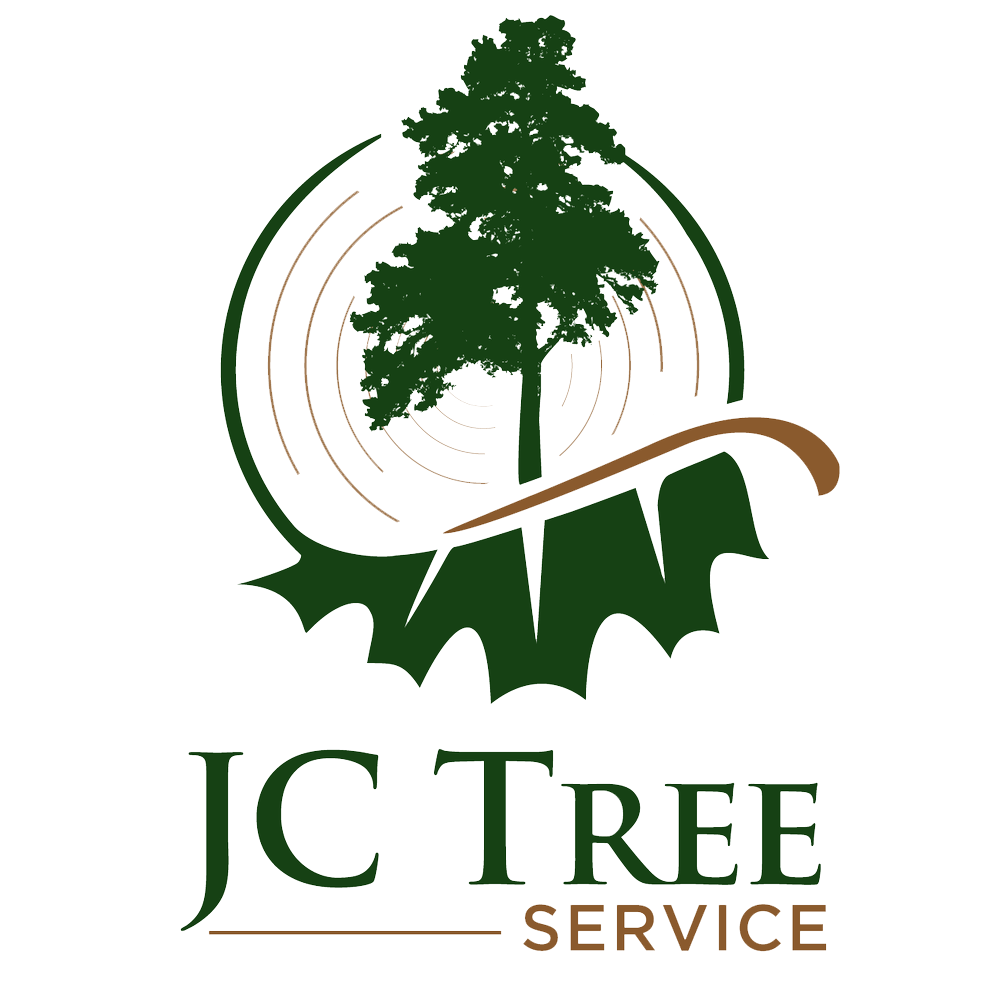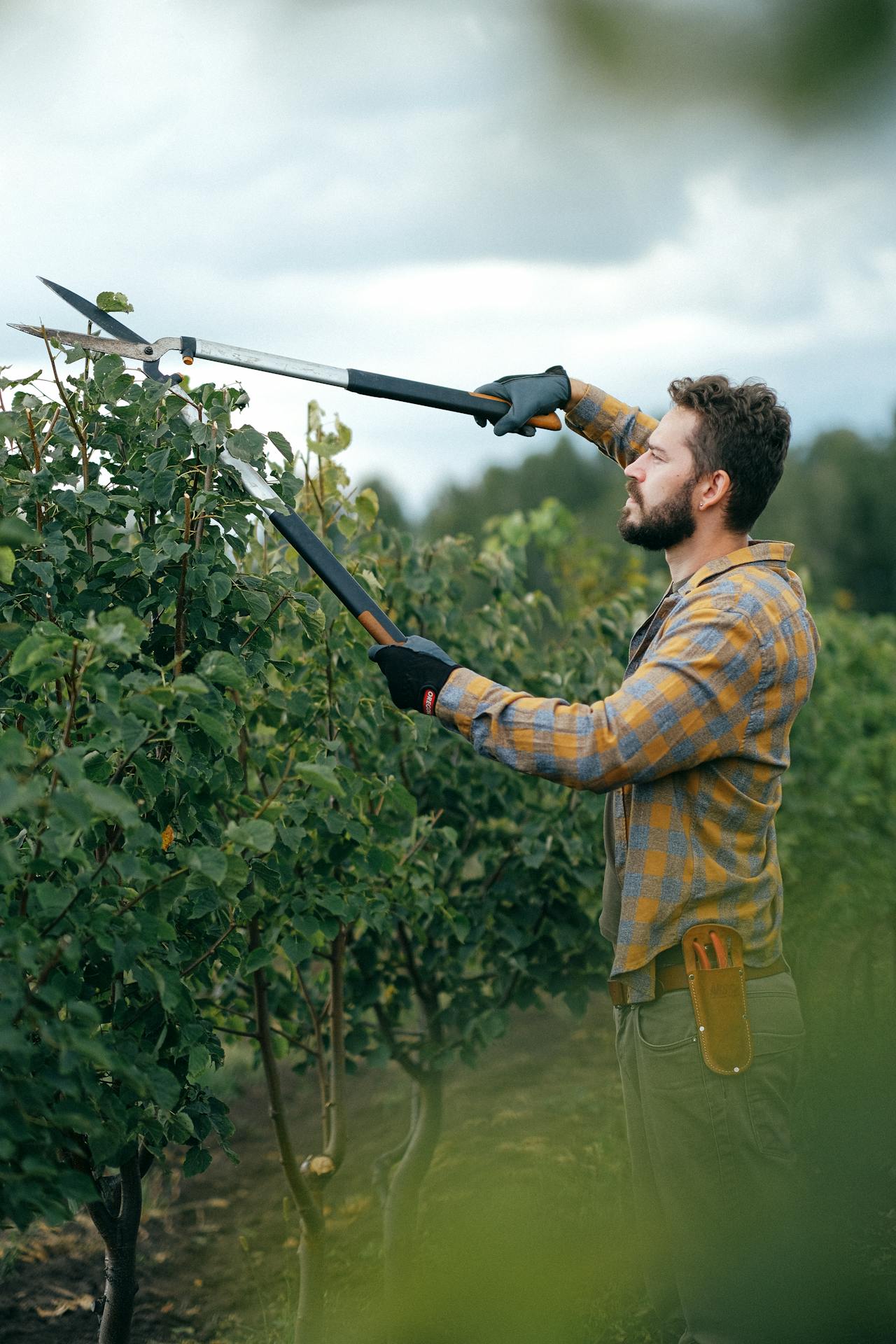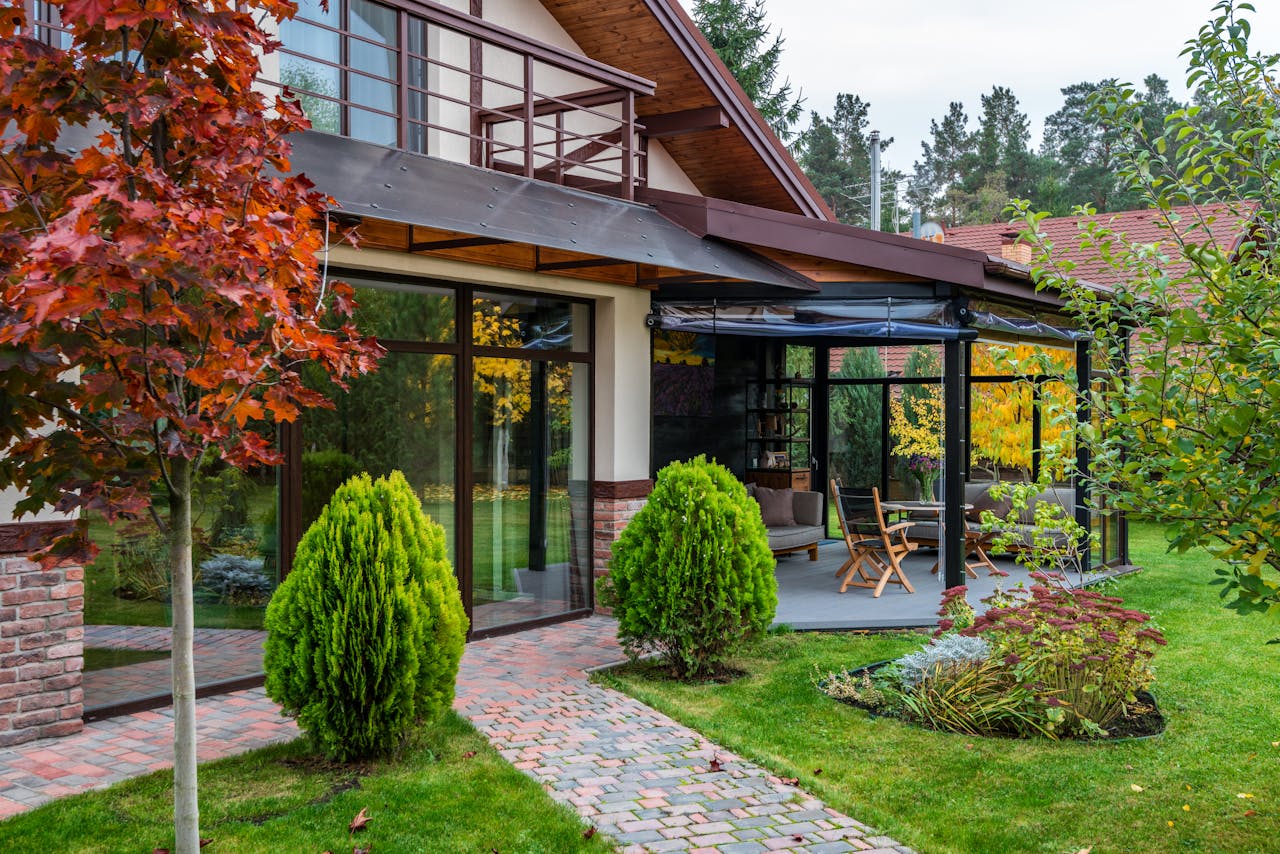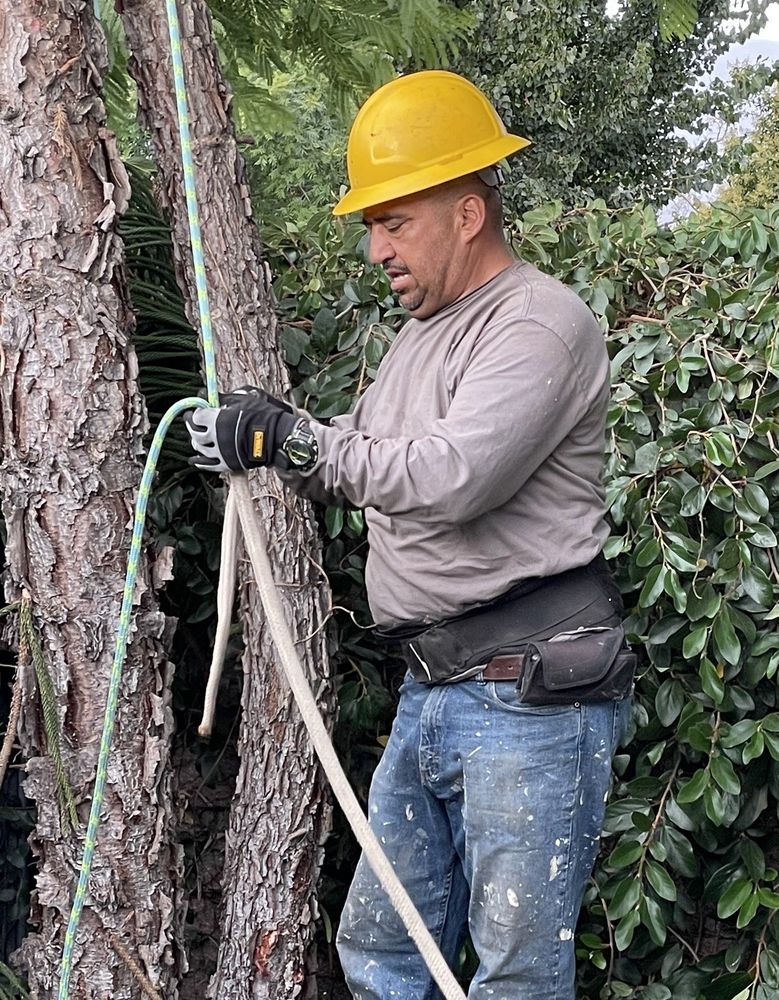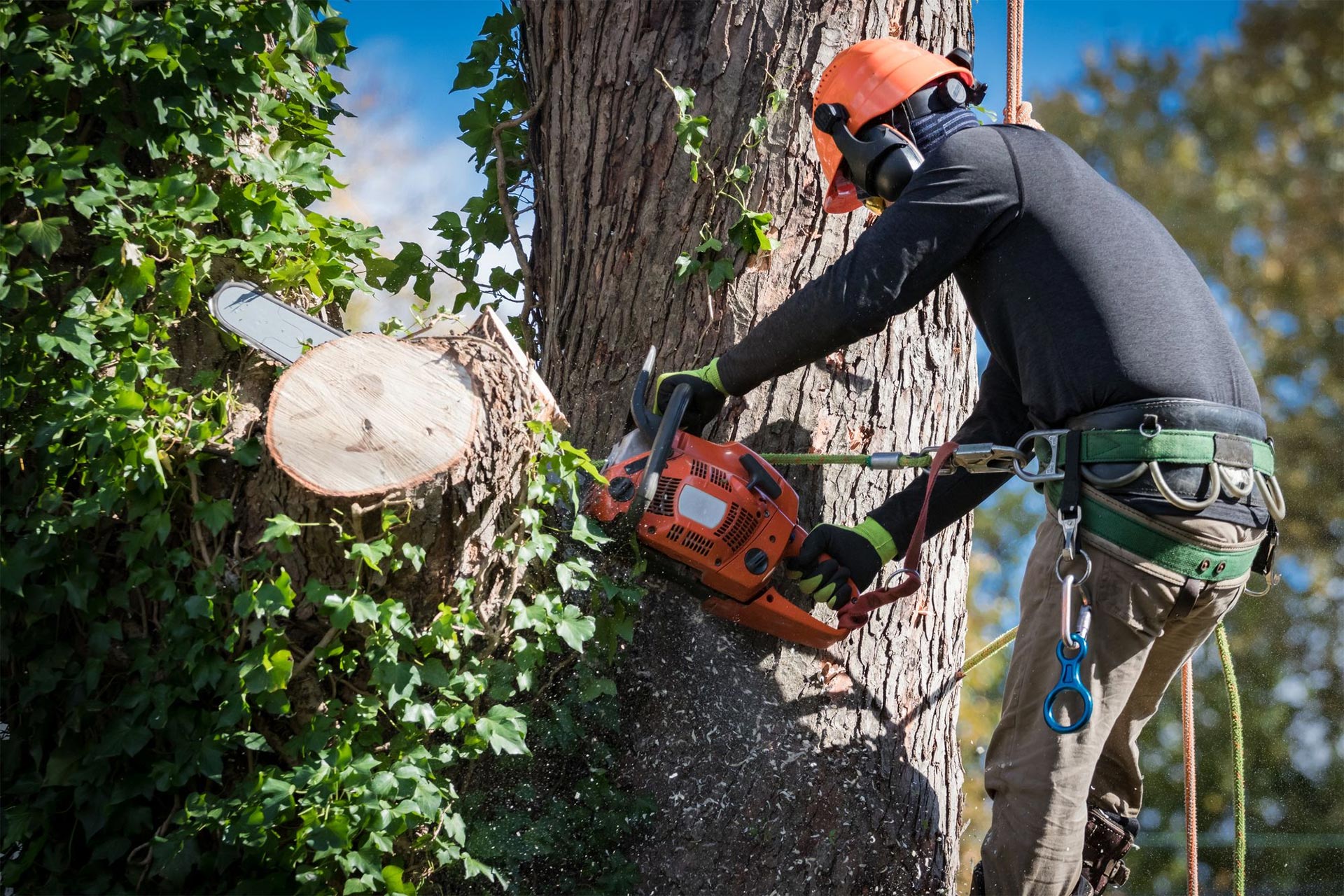Key Takeaways
- Topping trees puts them under extreme stress, leading to structural instability and long-term health problems. It removes the tree’s natural growth structure and ultimately weakens the tree.
- Reduced leaf area means less energy produced through photosynthesis, while large wounds left from the cuts expose trees to pests, pathogens, and environmental stress.
- This practice increases the likelihood of sunscald and poor included bark attachment. Consequently, it can lead to breaking branches, thereby posing safety risks and raising the costs of maintenance.
- Topping shortens a tree’s lifespan, with most topped trees needing to be removed within five years. Besides causing this harm, topping reduces the tree’s aesthetic and environmental value.
- Proper pruning and crown reduction are sustainable alternatives that promote the long-term health of trees. Working with certified arborists is an important part of realizing any management objective.
- Finally, determine the extent of damage for a topped tree. Next, support good regrowth by watering and nourishing the tree, followed by monitoring it closely to return the tree to its former glory.
Many people think tree topping is the easy solution when their tree outgrows its space or develops unsightly branches. Topping trees can do more damage than good. This practice strips away most of a tree’s canopy, exposing it to a variety of dangers.
Topping weakens the tree’s structure, making it more susceptible to breakage in severe weather. It further weakens the tree by stressing it, causing the tree to regenerate quickly and weakly, requiring more energy. These unsightly, exposed cuts invite decay fungi and pest infestations, establishing a pathway for long-term health issues.
The removal of foliage from the tree radically alters its ability to make food through the process of photosynthesis. The potential harmful effects of tree topping are severe. This is just one example of why it’s so important to adopt the right pruning methods to maintain healthy, thriving trees.
What Is Tree Topping?
Definition Of Tree Topping
Tree topping is a practice that removes most of the upper branches from a tree. It is commonly understood that this practice removes at least half of a tree’s canopy. This technique completely removes the tree’s height.
It leaves behind stubs or lateral branches that are unable to grow healthily. Responsible pruning means removing dead or weak branches that compromise the tree’s structure and strength. In contrast, topping destroys the tree’s natural shape.
This shock can make the tree feel the need to compensate by generating unsightly growths, including feathery twigs called “water sprouts.” These shoots are weakly attached and can become dangerous as they age.
Common Reasons For Topping Trees
Here are some of the reasons why homeowners and property managers top trees. One of the most frequent reasons given for topping is to reduce the height of trees that have grown too tall for their location.
This is especially critical when trees are near homes or power lines. Often, folks will top a tree just to get rid of the shade they’re creating! They believe incorrectly that this will provide more sunshine to their properties.
Consumers may believe that topping is a quick fix for storm damage. They think that cutting off branches will reduce the chance of them breaking and falling. Usually, these reasons are based on misconceptions or ignorance of more appropriate tree care methods.
Topping may look like an easy solution, but it almost always causes more issues than it remedies.
Misconceptions About Tree Topping
Topping is not a benign way to manage trees, despite what many people think. Topped trees are left in an acute state of stress, leading to increased vulnerability to pests and disease.
Another misconception is that topping promotes more vigorous regrowth. In practice, the new sprouts that develop don’t have the same structural strength as the original limbs.
Over time, this can result in weakened trees that are more likely to break. Rather than resolving issues, topping tends to exacerbate them, leading to increased maintenance expenses and increased safety hazards.
How Tree Topping Damages Trees
Tree topping destroys a tree’s natural shape and growth pattern. By cutting away significant portions of its crown, it compromises the tree’s stability and health. Trees need their crown for photosynthesis, to store nutrients, and for structural strength.
Topping is cutting off a tree’s largest, most vital branches. Instead, it channels that energy into creating a network of unstable, fast-growing tree shoots instead of cultivating strong, stable growth. In the long run, this unravels the tree’s natural growth pattern and undermines its structural integrity and overall health.
Nutrient Deprivation And Its Impact
Without leaves, the tree can’t conduct photosynthesis. The process by which a tree transforms sunlight into energy. Topping removes up to 100% of the tree’s leaf area, starving the tree of its food supply.
This nutrient loss does not just slow growth, it creates a much weaker tree vulnerable to environmental stressors. A tree that is deficient in the nutrients it needs already struggles to fight off pests such as aphids or caterpillars. Instead, it further weakens and harms the tree.
Vulnerability To Pests And Diseases
Topping cuts large, open wounds into trees that never heal correctly. These cuts serve as entry points for all sorts of damaging organisms, like fungi and bacteria.
The shock caused by topping weakens the tree’s natural defenses, leaving it more susceptible to disease and infestation. A tree that has been topped has a much greater chance of developing problems such as root rot and cankers. These issues can severely reduce its life expectancy.
Weak Branch Growth And Attachments
The quick growth that occurs after topping creates long, weak branches that have poor attachments to the trunk. These branches are at a greater risk of breaking under stress from storms or high winds, creating a safety hazard.
Weak growth equates to increased long-term maintenance costs, as the tree will need to be trimmed more often to avoid dangerous situations.
Increased Risk Of Sunscald
Topping trees removes the protective outer canopy, exposing the inner bark to direct sunlight that it cannot tolerate. Weakened bark prolonged exposure can result in a condition called sunscald, which results in bark splitting and tissue damage.
A complete canopy acts as an organic sunscreen for the tree, preventing these detrimental issues.
Overall Decline In Tree Health
Topping causes a chain reaction that puts trees at great risk. As a consequence, trees suffer from poor growth, thin canopies, and a drastic reduction in health.
The result will be an extremely unhealthy and unattractive tree, greatly diminishing its value in the landscape. With every subsequent topping, the long-term impact of compounding damage stunts the tree’s growth, shortening its lifespan and harming the tree’s natural beauty.
Risks Of Topping Trees
Structural Instability Over Time
Topping a tree removes all of the tree’s central branches, creating a liability as the tree attempts to regrow with weak branch unions. These new shoots are often the result of shallow connections, ones that aren’t strong enough to sustain future growth.
A topped oak will respond by sending up multiple spindly shoots that will snap off from the weight. This instability poses dangerous hazards, particularly in regions that experience high winds or storm conditions.
Having a tree with a strong structure is extremely important for safety, especially if that tree is close to houses, pedestrian sidewalks, or roadways. Without it, the chance of a crash occurring skyrockets.
Higher Maintenance Costs Long-Term
Topped trees are prone to ugly regrowth and will need to be cut back every year or two to keep the unsightly stubs in check. Over many trees, this results in tremendous labor and cost.
In the end, a nicely pruned maple leads a happy life with little ongoing maintenance needed. In reality, a topped maple will soon need to be pruned every 2-3 years.
Plus, investing in proper pruning techniques from the start is more cost-effective and involves less long-term maintenance stress.
Reduced Lifespan Of Trees
On topped trees, the stress from topping provides a real one-two punch—first by weakening their natural defenses.
Research indicates that over 50% of topped trees die or have to be removed within five years. This premature loss is entirely avoidable with proper tree trimming, which maintains trees’ health and longevity.
Safety Hazards From Falling Branches
The weakly attached limbs of these topped trees are likely to fall, risking injury or death to pedestrians or damage to vehicles or structures.
This can be addressed with regular inspections, but as always, prevention through tree care is the best cure.
Environmental Consequences Of Tree Loss
She is unable to walk under the shade of trees, and her environment is healthier with lower air pollution.
Fewer trees worsen urban areas’ impacts first, as tree-canopied streets are dramatically cooler, cleaner, and more pleasant than their denser, tree-deficient neighbors.
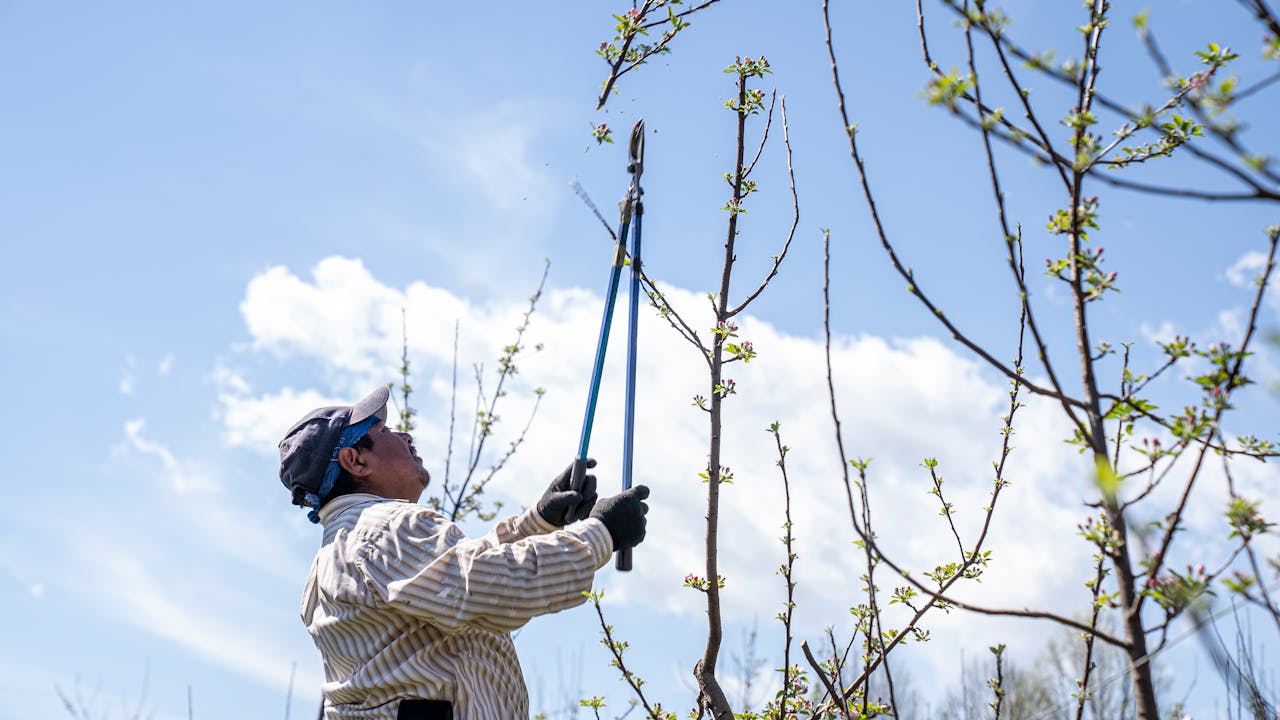
Negative Effects On Tree Health
Impaired Photosynthesis Process
Topping removes most of a tree’s canopy, which dramatically reduces a tree’s ability to grow food via photosynthesis. Leaves are the powerhouses of the tree, essential in converting sunlight into energy. When a tree loses too much leaf area, it can no longer produce enough energy to support itself.
This cumulative energy deficit compromises the health of the tree, leaving it susceptible to pests, diseases, and other environmental stressors. Healthy foliage directly affects a tree’s ability to flourish, so protecting a tree’s canopy is critical.
Stress And Shock To The Tree
Taking out massive portions of a tree’s canopy is an extreme shock. Topping removes so many limbs that the tree is left with open wounds that it can’t heal, leaving it vulnerable to decay and infection.
When a tree suddenly loses vital parts, it enters survival mode. This leads to a lot of flushes of new growth that is often very weak and short-lived. This stress affects the tree’s natural defenses, inhibiting its ability to heal and regrow in a normal manner.
The best practices for tree care seek to reduce this stress so that trees can be healthy and resilient.
Delayed Or Poor Growth Recovery
Topped trees usually take a long time to recover, if they survive at all, as they have lost an essential resource. The new shoots that sprout tend to be weak and badly attached, making them more susceptible to breakage.
Species, age, and overall tree health can all factor into how trees recover from such impacts. Taking care of problems when they are minor and choosing the right pruning technique can save your tree from irreversible harm.
Permanent Damage To Aesthetic Appeal
Topping ruins a tree’s natural form, resulting in an unsightly and lopsided tree. Unlike trees that have been properly pruned, topped trees never recover their original appearance.
Aesthetic motivations greatly influence the practice of tree care. More than any other quality, they add beauty—their beauty and the beauty they provide, to your landscape.
Sustainable Alternatives To Tree Topping
Choosing The Right Tree For The Location
Planting the appropriate tree in the appropriate location goes a long way toward preventing future conflicts. When choosing a replacement tree, make sure you’re aware of its mature height and spread. A small flowering ornamental such as a dogwood is perfect for a smaller yard with space constraints.
On the other hand, a single, massive oak can dominate a small space. When you select species that are appropriate for your region’s soil and climate, you’re setting up trees for stronger growth. With a little foresight, homeowners can prevent the need for extreme solutions such as tree topping.
This proactive approach prevents decay and disease from taking hold in their trees.
Implementing Proper Pruning Techniques
Using careful pruning techniques, it’s possible to keep trees healthy without excessive growth that compromises their structure. Alternatives such as selective pruning remove targeted branches to allow for better airflow and light penetration.
Crown thinning, an equally valid technique, removes smaller branches throughout the tree’s canopy to reduce weight and wind resistance and retain the tree’s natural shape. These techniques, particularly when employed by trained arborists, can address concerns like overgrowth without harming these vital trees in the long term.
Late winter or early spring, while trees are still dormant, is the best time to prune.
Crown Reduction As A Safer Option
Crown reduction is a safe and sustainable alternative to topping. It’s about selectively pruning back the tree’s height and lateral spread—in harmony with its natural shape. Proper crown reduction preserves the tree’s health and natural beauty.
Changes implemented in a step-by-step manner time relieve stress on the tree and encourage long-term health and stability.
Consulting Professional Arborists For Guidance
Having a certified arborist on hand can help ensure that the best possible decisions are made for our trees. They’re able to evaluate trees’ overall health and determine whether to prune them or use alternatives such as crown reduction.
By applying professional evaluations, trees can be pruned in a manner that they are given the best care, breaking the cycle of maintenance issues stemming from improper practices. Hiring a qualified arborist can ensure the health of your tree and the safety of your property.
Restoring the Health Of Topped Trees
Assessing The Extent Of Damage
Knowing the extent of damage is the first step to knowing how to heal. Common symptoms of a stressed tree, indicative of topping, include sparse foliage, weak branches, or leaves that are discolored. You may see shoots, usually referred to as “water sprouts,” growing vigorously from the cut locations.
These shoots are often weak and subject to breakage, leaving the tree vulnerable to further complications. Evaluate the tree’s overall condition first, then make a plan before proceeding. This means looking for signs of pests, disease, or decay that may have taken hold since the topping.
Understanding what you’re working with allows you to make more informed judgments about what recovery actions you need to take.
Encouraging Healthy Regrowth Strategies
Once you’ve determined the extent of damage, your attention should turn to getting the tree to regrow as robustly as it can. First, make sure it’s well-watered, particularly through any droughts or dry stretches. Putting mulch around the base of the tree, 2 to 4 inches deep, will help retain soil moisture and provide temperature control.
Nutrients are important, too, so if possible, a soil test to find out exactly what you need before applying fertilizer. Strategic pruning is another key strategy. Remove weak or damaged shoots as needed, but don’t over-prune the tree.
The intent is to move the development of this new growth to a better, healthier, more stable form. For instance, removing excess shoots increases air circulation and light penetration, leading to healthier, more vigorous growth.
Regular Monitoring And Maintenance Practices
Recovery is not a short-term practice. Monitor regularly for emerging issues, such as pest infestation or additional stress, and rectify with expediency. Monitor the direction of regrowth and adjust your pruning cuts accordingly.
Regular maintenance, such as watering in dry spells and adding mulch each year, will keep the tree healthy for many years to come. These steps don’t just help a topped tree recover; they help improve the overall health, longevity, and resilience of the tree.
Conclusion
For one, tree topping is bad for trees in general. Moreover, it weakens their structure, invites pests, and shortens their lifespan. Rather than producing a tidy appearance, it leads to long-term issues, including unhealthy growth and increased maintenance requirements. Healthy trees provide shade, beauty, and value to your property, but topping takes it all away.
By opting for sustainable pruning practices, you can ensure that your trees remain healthy and beautiful for years to come. Alternatives such as crown thinning or directional pruning encourage natural growth and can achieve safety and aesthetic aims without permanent damage. Even if a tree has been topped in the past, helping it get back on the path to recovery will go a long way in improving its health.
Healthy trees are an investment in your home, your community, and your environment. Consult an ISA Certified Arborist and invest in truly proper care to ensure they are well-protected for generations to come.
Enhance Your Landscape With JC Tree Service’s Expert Tree Maintenance
Proper tree maintenance is essential for keeping your property safe, beautiful, and well cared for. At JC Tree Service, we specialize in comprehensive tree maintenance services for homes and businesses in Brentwood, Antioch, and surrounding areas. Whether you need seasonal pruning, risk assessment, or help managing overgrown branches, our skilled team is here to ensure your trees stay healthy and safe year-round.
Our tree maintenance services are designed to prevent potential hazards, protect your property, and enhance curb appeal. With regular maintenance, we help you avoid risks from weak or damaged branches, manage tree growth, and support long-term health for a vibrant landscape. JC Tree Service focuses on eco-friendly practices, delivering solutions tailored to your needs while keeping your landscape organized and manageable.
Don’t let neglected trees jeopardize your property’s safety and beauty. Contact JC Tree Service today for a free, no-obligation quote on our professional tree maintenance services. Discover how expert care can transform your outdoor space!
Disclaimer
The materials available on this website are for informational and entertainment purposes only and not to provide legal or professional advice. You should contact your attorney or home improvement specialist to obtain advice concerning any particular issue or problem. You should not act or refrain from acting based on any content included in this site without seeking legal or other professional advice. The information presented on this website may not reflect the most current home improvement developments. No action should be taken in reliance on the information on this website. We disclaim all liability concerning actions taken or not taken based on any or all of the contents of this site to the fullest extent permitted by law.
